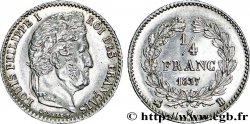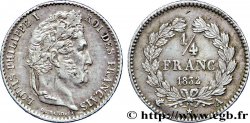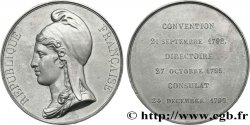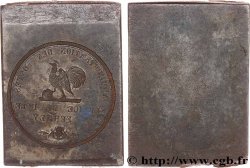E-auction 290-210732 - fme_381427 - LOUIS-PHILIPPE I Médaille, Statue du général Kléber
Чтобы принять участие в торгах, вы должны войти в систему и стать подтвержденным участником аукциона. Войдите, чтобы сделать ставку. Ваш аккаунт будет подтвержден в течение 48 часов. Не ждите до закрытия торгов, чтобы зарегистрироваться.Сделав ставку на данный товар, вы вступаете в юридическое соглашение на покупку выбранного товара и нажатием кнопки «Сделать ставку» подтверждаете принятие вами условий интернет-аукционов cgb.fr.
Ставка может бить сделана только в полном эквиваленте евро. Торги закроются согласно времени, указанному в описании товара, все ставки, сделанные после закрытия торгов, учитываться не будут. Не следует откладывать предложение вашей ставки до последнего момента, так как система может не успеть обработать вашу заявку, и ваша ставка не будет принята. Более детальную информацию вы найдёте здесь: FAQ по интернет-аукционам.
БЕСПЛАТНО.
БЕСПЛАТНО.
| Оценить : | 50 € |
| Цена : | 30 € |
| Максимальная предлагаемая цена : | 31 € |
| Конец торгов : | 05 November 2018 18:50:30 |
| Участников : | 5 Участников |
Тип Médaille, Statue du général Kléber
Дата: 1840
Монетный двор / Город: 67 - Strasbourg
Металл: bronze
Диаметр: 59,5 mm
Ориентация осей монеты: 12 h.
Гравер EMMERICH C. F. (Strasbourg)
Вес: 86 g.
Век: lisse + corne BRONZE
Пуансон: corne BRONZE
Комментарии о состоянии
Refrappe en excellent état de conservation avec une agréable patine brossée
Лицевая сторона
Аверс: легенда: STRASBOURG / 1840.
Аверс: описание: Vue de la ville de Strasbourg.
Обратная сторона
Реверс: легенда: J. B. / KLEBER / NÉ / À STRASBOURG / LE 6 MARS / 1753 // GÉNÉRAL / EN CHEF / EN ÉGYPTE / MORT AU CAIRE / LE 14 JUIN 1800..
Реверс: Описание: Statue de J.-B. Kleber.
Комментарий
Médaille signée C. F. EMMERICH F à l’exergue au droit et C. F. EMMERICH F. - P. GRASS STATUAIRE au revers. Le socle de la statue est inscrit “A / KLEBER / SES FRERES D’ARMES / SES CONCITOYENS / LA PATRIE 1840”.
Philippe Grass, né à Wolxheim (Bas-Rhin) le 6 mai 1801 et mort à Strasbourg le 9 avril 1876, est un sculpteur français.
La place Kléber est la principale place publique du centre-ville de Strasbourg. Le 14 juin 1800, au Caire, Soleyman el-Halaby, un jeune étudiant syrien, assassine le général Jean-Baptiste Kléber. Le commandant suprême de l’armée d’Égypte est alors au faîte de sa gloire : il a remporté, trois mois plus tôt, la victoire d’Héliopolis, reprenant la Haute-Égypte aux Turcs et aux Anglais. La gloire de Kléber surpasse alors celle de Bonaparte. Son assassinat le fait passer de la gloire à la légende. La mort de Kléber est donc un souci pour Bonaparte. Pas question donc de lui célébrer des obsèques nationales, ni même de lui donner une sépulture qui pourrait devenir très vite un lieu de pèlerinage républicain. Au Caire, on embaume le corps, on le dépose dans un cercueil de plomb, disposé lui-même dans un cercueil de chêne et on l’enterre au fort Ibrahim.
Finalement, en 1818, Louis XVIII ordonna qu’on transfère les cendres de Jean-Baptiste Kléber à Strasbourg, sa ville natale.
Le corps de Jean-Baptiste Kléber repose depuis le 15 décembre 1838 dans un caveau situé sous sa statue au centre de la place Kléber. La statue, œuvre de Philippe Grass de 1840, représente le général en pieds, tenant la lettre de l'amiral Keith qui demandait la capitulation des troupes françaises. Kléber s'adressa alors à ses troupes : « Soldats, on ne répond à une telle insolence que par des victoires. Préparez-vous à combattre ». L'armée turque acheminée par les Britanniques fut écrasée par les troupes de Kléber. L'inauguration de cette statue fut faite avec une certaine gêne par les autorités de l'époque. C'était en effet le temps de la Monarchie de Juillet et de la réconciliation et l'oubli des conflits passés. La ville organisa donc une grande fête pour l'inauguration de la statue de Gutenberg, sujet consensuel et rassembleur, alors que l'inauguration de la statue de Kléber se fit beaucoup plus discrètement 10 jours plus tôt en juin 1840..
Philippe Grass, né à Wolxheim (Bas-Rhin) le 6 mai 1801 et mort à Strasbourg le 9 avril 1876, est un sculpteur français.
La place Kléber est la principale place publique du centre-ville de Strasbourg. Le 14 juin 1800, au Caire, Soleyman el-Halaby, un jeune étudiant syrien, assassine le général Jean-Baptiste Kléber. Le commandant suprême de l’armée d’Égypte est alors au faîte de sa gloire : il a remporté, trois mois plus tôt, la victoire d’Héliopolis, reprenant la Haute-Égypte aux Turcs et aux Anglais. La gloire de Kléber surpasse alors celle de Bonaparte. Son assassinat le fait passer de la gloire à la légende. La mort de Kléber est donc un souci pour Bonaparte. Pas question donc de lui célébrer des obsèques nationales, ni même de lui donner une sépulture qui pourrait devenir très vite un lieu de pèlerinage républicain. Au Caire, on embaume le corps, on le dépose dans un cercueil de plomb, disposé lui-même dans un cercueil de chêne et on l’enterre au fort Ibrahim.
Finalement, en 1818, Louis XVIII ordonna qu’on transfère les cendres de Jean-Baptiste Kléber à Strasbourg, sa ville natale.
Le corps de Jean-Baptiste Kléber repose depuis le 15 décembre 1838 dans un caveau situé sous sa statue au centre de la place Kléber. La statue, œuvre de Philippe Grass de 1840, représente le général en pieds, tenant la lettre de l'amiral Keith qui demandait la capitulation des troupes françaises. Kléber s'adressa alors à ses troupes : « Soldats, on ne répond à une telle insolence que par des victoires. Préparez-vous à combattre ». L'armée turque acheminée par les Britanniques fut écrasée par les troupes de Kléber. L'inauguration de cette statue fut faite avec une certaine gêne par les autorités de l'époque. C'était en effet le temps de la Monarchie de Juillet et de la réconciliation et l'oubli des conflits passés. La ville organisa donc une grande fête pour l'inauguration de la statue de Gutenberg, sujet consensuel et rassembleur, alors que l'inauguration de la statue de Kléber se fit beaucoup plus discrètement 10 jours plus tôt en juin 1840..








 Cообщить об ошибке
Cообщить об ошибке Распечатать страницу
Распечатать страницу Отправить мой выбор
Отправить мой выбор Задать вопрос
Задать вопрос Consign / sell
Consign / sell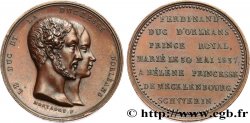
 Информация
Информация